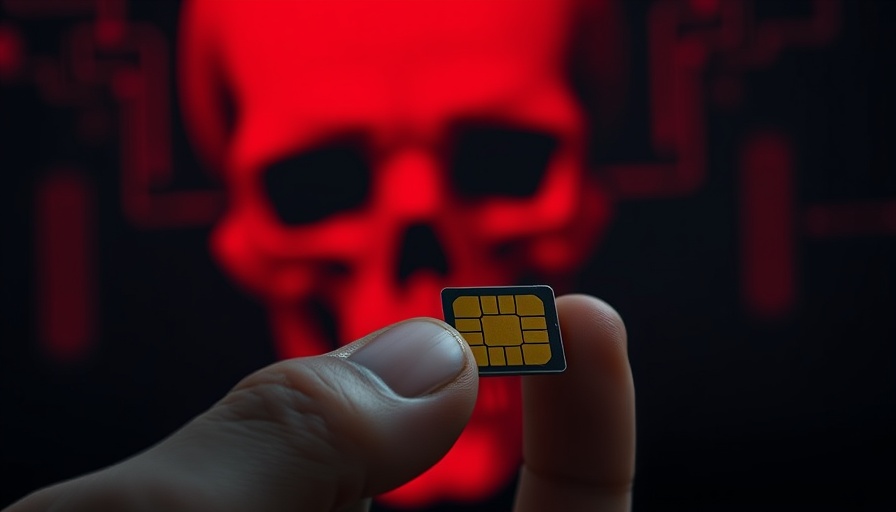
Understanding SIM Swap Attacks and Their Threat
In today's digital age, our phone numbers are more than just a means of communication; they serve as keys to our identity. This makes them a prime target for cybercriminals seeking to hijack services through SIM swap attacks. In these schemes, a hacker impersonates a victim—using personal information to convince their mobile carrier to transfer the victim's phone number to a SIM card in the hacker's possession. This gives them full control over the victim's calls and messages, posing a significant risk to online security.
How Does SIM Swapping Work?
The mechanics of a SIM swap are alarmingly straightforward. Using social engineering tactics, hackers often gather personal data from social media, data breaches, or phishing scams. Armed with details like the victim’s name and date of birth, the hacker contacts the victim’s mobile carrier, effectively tricking customer service into believing they are the legitimate account holder. Once the transfer is complete, the hacker can access sensitive accounts linked to that phone number, often without any initial suspension of service.
The Ripple Effects of a Hijacked Phone Number
When a hacker gains control over your phone number, the implications are extensive. Not only can they reset passwords or steal sensitive information from banks and online services, but they can also pose as you to customer service representatives, gaining unauthorized access to your accounts. According to experts, these incidents often leave victims feeling vulnerable, as their digital identity is compromised, leading to financial losses and emotional distress.
Preventive Measures: Protect Your Phone Number
The good news is that numerous carriers have recently rolled out security features to combat SIM swapping. Customers are encouraged to take proactive steps to secure their accounts:
- AT&T: Their free Wireless Account Lock feature allows users to lock their number from being transferred without express permission. Customers can enable this through the AT&T app or account portal.
- T-Mobile: Similar to AT&T, T-Mobile allows users to prevent unauthorized porting of their numbers by setting this feature on their online accounts.
- Verizon: Verizon offers two features, SIM Protection and Number Lock, that both require user-enabled activation through their app or account portal, serving as safeguards against unauthorized changes.
Additional Security Practices
Aside from utilizing the security features provided by carriers, individuals can adopt additional security practices:
- Use Strong Passwords: A unique and complex password for accounts linked to your phone number can deflect unauthorized access.
- Enable Two-Factor Authentication: Many online services offer two-factor authentication, requiring additional verification, which adds another layer of security.
- Regularly Monitor Accounts: Check your accounts frequently for any unauthorized transactions or changes.
The Impact of Awareness and Education
Informed consumers are better equipped to avoid becoming victims of SIM swap attacks. Many people remain unaware of the dangers associated with their phone numbers and the importance of securing them. Awareness campaigns and educational resources can play a crucial role in shifting this narrative, encouraging individuals to adopt better security practices and understanding the context of risks in the digital age.
Looking Forward: The Future of Mobile Security
As technology evolves, so will the tactics of cybercriminals. It’s critical for both consumers and carriers to innovate continuously, adapting to emerging threats. Enhanced biometric security measures, more sophisticated authentication protocols, and increased regulatory oversight for mobile carriers may be part of future defenses. Staying informed about developments in mobile security can empower users to protect their identities more robustly.
Overall, understanding the landscape of SIM swap attacks and implementing robust security measures can significantly reduce your risk of becoming a victim. By taking awareness seriously and acting on it, everyone can contribute to a safer digital environment.
 Add Row
Add Row  Add
Add 



Write A Comment